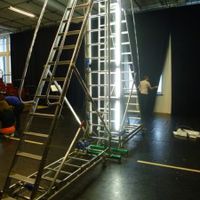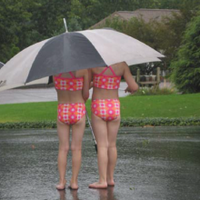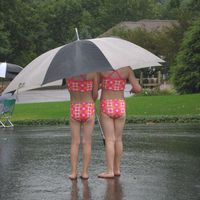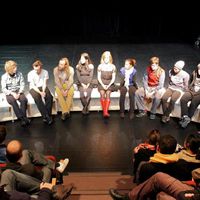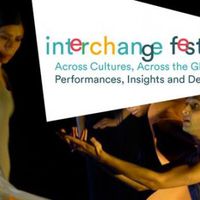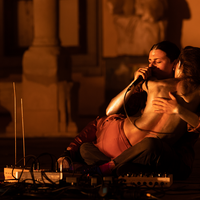The source of Monsoon

Arco Renz graduated from Brussels’ Performing Arts Research Studios (PARTS) and has worked with American stage director and playwright Robert Wilson on many theatre, dance and opera productions. In 2000, he founded the contemporary dance company, Kobalt Works, together with other artists he has worked with. Arco is currently an artist-in-residence at STUK Arts Centre in Leuven, Belgium.
[caption id="attachment_8368" align="alignright" width="392" caption="German-Belgian choreographer Arco Renz (left) with Choi Ka Fai, one of the participants of Monsoon"]
Besides choreographing, Arco has also been involved since 2007 in developing initiatives which bring together artists from different disciplines for a fertile exchange. One of these initiatives is Monsoon which focuses on connecting Asian and European artists. Arco took part in Asia-Europe Foundation’s Asia-Europe Dance Forum: Pointe to Pointe in China in 2007.
He talks to Katelijn Verstraete, Asia-Europe Foundation’s (ASEF) Assistant Director for Cultural Exchange, on how he started with Monsoon and his experiences in the last edition which took place in Leuven, Belgium, in December 2010 and was supported by ASEF.
Why did you start a programme like Monsoon to connect Asian and European artists? Why is it called Monsoon?
In my experiences of touring, creating, studying and traveling in Asia and Europe, I found that there was no programme which provided opportunities for genuine encounters between artists. With ‘genuine’, I mean that the encounter itself is the focus.
Monsoon is an evolutionary platform as it adapts and changes according to the environment in which it takes place. Each Monsoon is a creative process and is made possible by the unified energy of a group of individuals from different artistic and cultural backgrounds. As an artist, the instigation of organic processes of experience and reflection is one of my prime interests.
The name Monsoon refers to the Asian element of the project. In the West, the word ‘monsoon’ is associated with romantic images of an exotic Asia. But monsoon is a powerful reality in the region. In the context of this platform, the word becomes a symbol for bringing opposite elements together at a time and space that attempts suspend differences: just as water and earth come together to bring fertility and growth during the monsoon seasons in Asia.
What is different in this third edition of Monsoon?
From past Monsoon editions, I was convinced that this time the atmosphere should be small-scale and intimate, in order to give the participants maximum autonomy. We learned from the previous Monsoon methodological approaches.
One of the things we learned in the Korea Monsoon was that it is crucial to find the right balance between giving a structure and autonomy to the participants. How far do you give a theme, how much framing do you provide, and how much freedom there is inside the frame.
The Monsoon project in Korea (2006) was very different. It was a big group of about 20 artists from different disciplines who met over a period of two weeks. We really made no rules. There was total autonomy. No theme, only a challenge: to try to find strategies to suspend differences while working together. I was the initiator of the platform and Sally De Kunst and curator Florian Malzacher were the facilitators of the process. Asian and Europeans have different group dynamics. Very roughly put: Europeans like to talk, Asians like to do things. That became a source of constructive conflict.
This was different from the edition in Leuven in 2010 where dramaturge Bart Van De Eynde and I were ready to give feedback when the artists asked for it. Still we did not organise our role to stimulate in a systematic way. The exchange was much deeper and the encounter part was more important than the presentation of the work.
How did you select the artists?
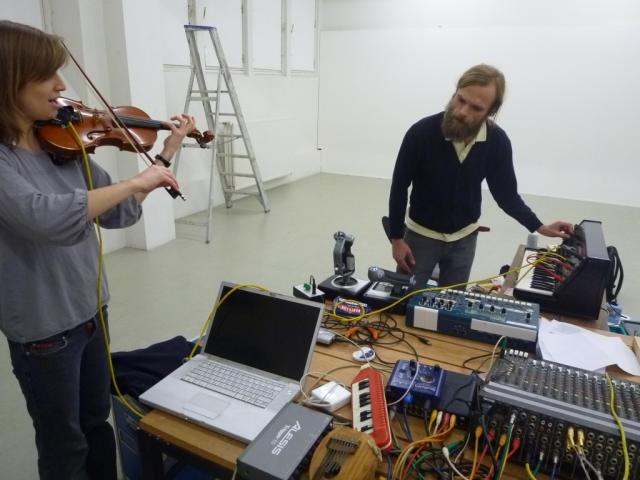 I invited artists whom I have met or who were recommended to me. It really is an intuitive process to put together a group of people. I found it important to have one person from each of the previous two editions for the third edition in Leuven. But the focus was on getting artists from different disciplines who could collaborate together and also have a mixture of younger and older, more experienced artists.
I invited artists whom I have met or who were recommended to me. It really is an intuitive process to put together a group of people. I found it important to have one person from each of the previous two editions for the third edition in Leuven. But the focus was on getting artists from different disciplines who could collaborate together and also have a mixture of younger and older, more experienced artists.“As an artist, the opportunity to participate in an intercultural artistic platform is a goldmine for artistic, social, and scientific exchanges. I would be in a pool of people living and creating in diverse ways, significantly different in some ways from mine. Progress happens with the meeting of such minds and bodies, everyone comes out richer.”
Eisa Jockson, visual artist and pole dance practitioner, The Philippines
You brought together eight artists from eight different countries and different disciplines. What were your experiences of their encounters? What challenges and discoveries were made?
Musician and stage director Sybille (France/UK) and classical dancer Moly (Cambodia) experimented much more with their different cultural backgrounds and respective artistic fields: classical music and opera and traditional Cambodian dance.
Sybille is classically trained but as a stage director, she is exposed to a variety of art forms. Moly had little exposure to the west and to contemporary dance. Their classical training became the subject of their encounter.
They really went into the question of what classical tradition signifies in Europe or Cambodia as well as in music or in dance and how to deal with it in contemporary contexts. For Moly, the responsibility to stimulate dialogue and interaction was an entirely new challenge, a constructive difficulty. And in her own words, the experience was mind-blowing.
A platform like Monsoon intends to provide a concentrated, safe environment that invites the artists to go into unknown territory. The process takes place in an intimate setting. And the work-in-progress presentation marking the end of the platform brings to a point the encounter and process and communicates and discusses it with the outside world. The encounter and exchange are about discovering and sharing fresh and possibly new perspectives on accepted facts.
The encounters between the other artists were driven primarily by their artistic interests more than their cultural backgrounds. For example, I found it striking how Eisa Jockson, a visual artist and pole dance practitioner from the Philippines, and Ugo Dehaes, a Belgian choreographer, immediately started as if they have been working together already. They found a common ground in their work with the pole.
It was fascinating to see how Ugo integrated his work with hers around the pole and how she worked on his input in just two days. Cultural differences didn’t seem to be a big issue in their encounter, but I think that is actually not true. If you can collaborate easily like that, it actually says a lot about Asia and Europe, and how many influences we actually do share despite the distance.
“The nice thing about Monsoon was that it allowed me to participate as a dancer in other people's projects, to participate creatively without being responsible for the project, or to work on smaller projects that can nourish my future work, or that can dig deeper into things that were researched before.” Ugo Dehaes, choreographer, Belgium
What does the future look like for Monsoon?
I would like to organise Monsoon in Asia again. It will continue to focus on creating intimate encounters between pairs of artists but the group discussions and activities will be given more space and time. The role of “zap guests” (specialists from a particular non-artistic fields such as science, politics, economy, etc., who meet with the artists to give information and feedback from his or her specific perspective) will be extended. There will be zap guests for the couples and also for the entire group. Their input will also be discussed more broadly.
We are currently discussing with the Taipei Artist Village to host an edition in December 2011.
Similar content
By Ramona David
14 Mar 2011
posted on
14 Dec 2010
from - to
30 Nov 2013 - 07 Dec 2013
16 Mar 2011
from - to
01 Nov 2015 - 15 Nov 2015
By Kerrine Goh
09 Oct 2023

